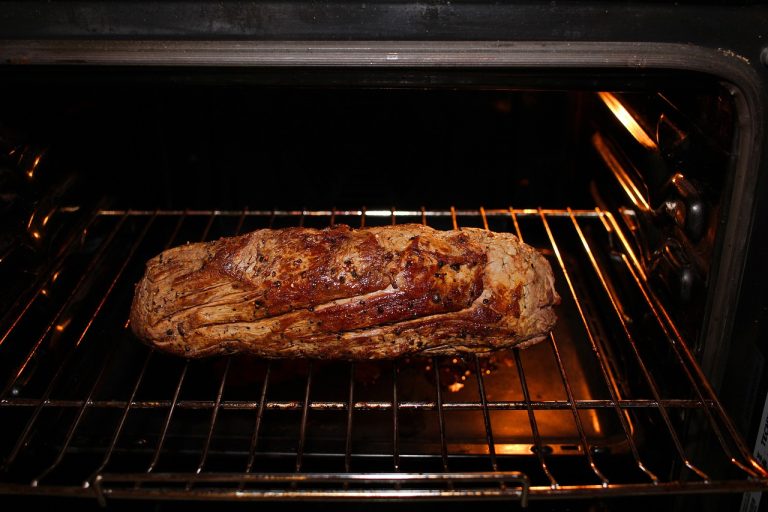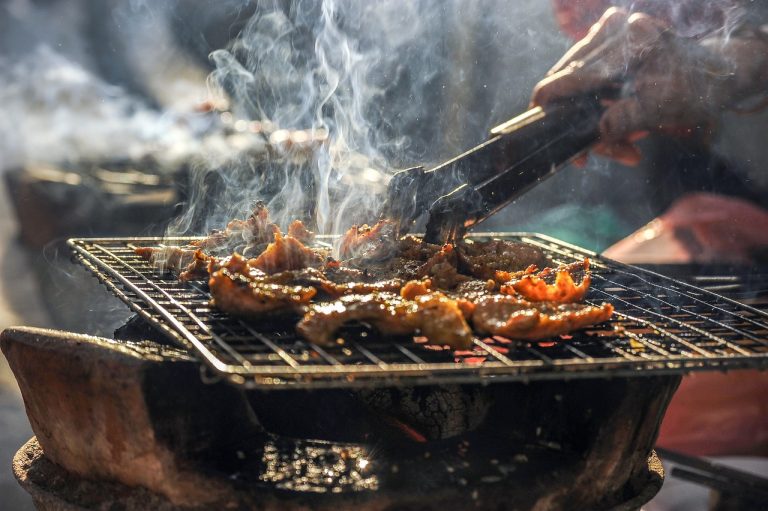HOW TO REST A BRISKET (8 things you must know about)
Barbecue enthusiasts and home cooks alike can attest to the mouthwatering allure of a perfectly cooked brisket. However, the secret to achieving that unparalleled tenderness and flavor isn’t just in the cooking process itself; it lies in the crucial step of resting the brisket. In this guide, we’ll delve into the art of resting a brisket, exploring its significance and providing expert tips for ensuring your brisket is nothing short of extraordinary.
HOW TO REST A BRISKET?
Resting a brisket is a pivotal step in the culinary journey of barbecue enthusiasts. Achieving the perfect tenderness and flavor hinges on understanding the nuances of this often-overlooked process. After the brisket is expertly cooked, allowing it to rest, wrapped in foil or towels, ensures optimal juiciness.
This critical phase lets the meat relax, permitting the redistribution of savory juices for a mouthwatering result. Patience is key—resting for 30 minutes to an hour strikes the right balance. Avoiding the temptation to rush this step guarantees a brisket that transcends the ordinary, leaving a lasting impression on your taste buds. Elevate your barbecue game by embracing the art of resting a brisket, where culinary excellence meets perfection.
WHAT IS BRISKET?
Brisket, a cut of meat from the breast or lower chest of beef, is renowned for its rich flavor and versatility. Commonly used in smoking and grilling, this beef cut demands careful attention, especially when it comes to the often-overlooked step of resting.
WHY RESTING MATTERS
Resting a brisket is more than just a pause in the cooking process. It’s a crucial step that allows the meat’s juices to redistribute, resulting in enhanced tenderness and flavor. Neglecting this step can undermine all the effort put into preparing the perfect brisket.
STEPS TO RESTING A BRISKET
The journey to a well-rested brisket begins with meticulous preparation. Ensuring the meat is ready for its resting phase sets the foundation for success. Once prepared, understanding the optimal resting time and conditions is essential to achieving the desired outcome.
COMMON MISTAKES TO AVOID
In the rush to present a tantalizing brisket, many make the mistake of not allowing sufficient time for resting. This impatience can diminish the overall quality of the meat, leaving it less juicy and flavorful than it could be. Avoiding common pitfalls ensures the best possible outcome.
BENEFITS OF PROPER RESTING
Properly rested brisket boasts a multitude of benefits. From heightened juiciness to improved tenderness, the rewards of patience in this step are undeniable. The resting process is where the magic happens, transforming a well-cooked brisket into an extraordinary culinary experience.
BEST PRACTICES
The journey to the perfect brisket involves employing best practices during the resting phase. Whether using foil or towels to insulate and protect the meat, understanding these practices ensures your efforts are rewarded with a brisket that surpasses expectations.
HOW TO KNOW WHEN IT’S READY
Discerning the readiness of your brisket involves keen observation of visual cues and monitoring internal temperature. Visual indicators include the coveted mahogany bark forming on the exterior, signaling a perfect sear. The meat should exhibit a firm yet yielding texture, signifying optimal tenderness.
Internally, a reliable meat thermometer will be your ally—aim for an internal temperature ranging between 195°F to 205°F (90°C to 96°C). When the thermometer slides into the meat effortlessly and you encounter minimal resistance, your brisket is poised for perfection. Mastery of these cues ensures your culinary masterpiece is ready to take center stage, delivering a symphony of flavors with each savory bite.
EXPERT TIPS
Drawing insights from seasoned chefs, this section explores additional tips and tricks for achieving the ideal brisket. From experimenting with different resting techniques to incorporating unique flavors, these expert suggestions elevate your brisket game.
Frequently Asked Questions (FAQ) about “How To Rest A Brisket”
Why is resting a brisket necessary?
Resting allows the juices within the brisket to redistribute, resulting in enhanced tenderness and flavor. Skipping this step may lead to a less juicy and flavorful outcome.
How long should I rest a brisket?
The optimal resting time for a brisket typically ranges from 30 minutes to an hour. However, experimenting with different durations can help you find the perfect balance based on your preferences.
Can I rest a brisket too long?
While longer resting times can improve flavor, excessively long rests may lead to a cooler serving temperature. It’s essential to find a balance that preserves warmth while maximizing the meat’s quality.
Should I use foil or towels for resting a brisket?
Both methods are common. Foil helps insulate and retain heat, while towels can absorb excess moisture. Choose the method that aligns with your desired outcome and available resources.
Can I rest a brisket in the refrigerator?
While some recommend a brief rest in the refrigerator, it’s crucial to balance this with a period at room temperature to allow the brisket to relax and retain its juiciness.
CONCLUSION
Mastering the art of resting a brisket is the secret ingredient to elevating your culinary prowess. This seemingly simple step holds the key to unlocking the full potential of your brisket, transforming it from a well-cooked dish to an extraordinary culinary experience. By allowing the brisket to rest, you give its juices the time they need to redistribute, enhancing tenderness and flavor.
Whether you’re a seasoned pitmaster or a home cook experimenting with barbecue, embracing patience during this crucial phase will undoubtedly set your brisket apart. So, the next time you embark on a brisket-cooking adventure, remember: a little patience goes a long way in achieving barbecue perfection.








